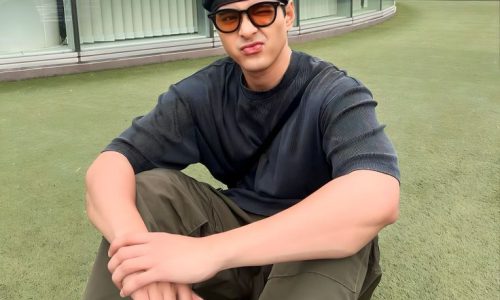
Quiet Elegance Meets Loud Luxury in 2025’s Fashion Scene
Introduction
In 2025, fashion is not just a matter of fabric and silhouette—it’s a dynamic interplay between technology, identity, and innovation. The landscape is shifting at an accelerated pace, with artificial intelligence (AI) and augmented reality (AR) at the forefront of this style revolution. Clothing has transcended its traditional role of covering the body, evolving into a vehicle for expression, interaction, and digital immersion. From smart textiles that adapt to the environment to virtual wardrobes designed with precision algorithms, fashion in 2025 is a portal into the future.
The Intersection of Artificial Intelligence and Personal Styling
Artificial intelligence has become a personal fashion assistant, quietly transforming how people choose and wear clothing. In 2025, AI-driven algorithms analyze a wearer’s behavioral patterns, climate preferences, social engagements, and even mood data to offer deeply customized style suggestions. These digital stylists aren’t limited to mere outfit coordination—they assess daily calendars, current events, and social media cues to deliver ensembles that match both context and character.
Fashion apps powered by machine learning integrate seamlessly with wearable devices, drawing from biometric data like heart rate and body temperature to recommend optimal fabrics for comfort and performance. AI’s contribution doesn’t end at consumer styling; behind the scenes, it revolutionizes how brands forecast trends, manage inventories, and create designs that resonate on a global scale.
Augmented Reality and the Rise of the Virtual Try-On
Augmented reality, once a novelty, is now integral to fashion’s evolution. With AR mirrors and mobile applications, shoppers in 2025 can visualize garments on themselves without entering a fitting room. These digital overlays render precise, real-time reflections of how a piece fits, moves, and complements an individual’s physique.
Retailers embrace AR to enhance customer satisfaction, offering immersive shopping experiences that blend the digital and physical realms. Whether experimenting with avant-garde couture or previewing seasonal collections, consumers gain agency in their purchases through virtual experimentation. Designers also leverage AR to present collections in 3D, allowing audiences to interact with pieces in unprecedented ways—from rotating digital shoes to adjusting colorways of a garment in real time.
AI-Generated Fashion: Where Creativity Meets Code
Designers are increasingly collaborating with artificial intelligence to break traditional boundaries. Algorithms are trained on decades of fashion history, artistic references, and evolving aesthetics to generate silhouettes, textures, and patterns that challenge human imagination. The resulting garments often carry an otherworldly quality—sophisticated yet strange, mathematical yet emotionally resonant.
In 2025, AI is not merely a tool but a co-creator. Emerging labels use AI to accelerate ideation, producing hundreds of drafts that are fine-tuned by human touch. These hybrid processes allow for radical experimentation, where generative designs meet artisanal execution. By blending computational power with cultural intuition, fashion creators unlock new vocabularies of style.
Immersive Fashion Shows and AR Runways
The concept of a traditional fashion show has been redefined. With advancements in augmented reality, designers stage immersive runways that can be viewed from any location through AR headsets or mobile apps. Attendees witness models walking through fantastical landscapes—underwater cities, intergalactic realms, or abstract digital constructs—each designed to match the collection’s mood.
In addition, live audience interaction has been transformed. Viewers can manipulate lighting, switch angles, and zoom into textiles, experiencing an unprecedented level of intimacy with the garments. This fusion of storytelling, technology, and couture allows brands to reach global audiences with theatrical flair while reducing the environmental impact of physical shows.
The Integration of Smart Textiles and Responsive Clothing
2025’s fashion revolution extends to the materials themselves. Smart textiles embedded with sensors and responsive fibers allow garments to adapt to surroundings or personal states. Clothes can now adjust insulation levels in real time, display biometric readings, or shift hues based on mood or light exposure.
These innovations serve both functional and expressive purposes. Athletes wear clothing that monitors hydration and posture. Officewear adapts to temperature fluctuations in indoor environments. Evening wear can shimmer and transform, offering wearers a sense of living art. Designers collaborate with engineers and scientists to fuse aesthetics with responsiveness, reshaping the boundaries of what garments can achieve.
Sustainable Innovation Through Data and Simulation
AI and AR are pivotal in driving sustainable practices in fashion. Designers use digital twin technology and 3D modeling to prototype garments without producing wasteful samples. By simulating fabric behavior, drape, and fit in a virtual environment, brands drastically reduce material consumption during development.
Supply chains, too, are optimized through predictive analytics. AI forecasts demand with high accuracy, minimizing overproduction and markdowns. Additionally, consumers are empowered to make conscious choices by exploring carbon impact data and sustainability ratings via AR-enhanced product views. Fashion in 2025 thrives on transparency, accountability, and innovation led by digital intelligence.
Digital Identity and Virtual Fashion Economies
As people spend increasing time in digital spaces, fashion has extended into the virtual world. Avatars on gaming platforms, social networks, and metaverse environments wear custom-designed outfits sold through NFT-based marketplaces. These digital garments are often exclusive, limited in edition, and tied to blockchain authenticity, redefining what ownership means.
Individuals craft digital identities with as much care as their physical ones. Wearing a couture gown in a virtual gala or a branded jacket in a multiplayer game is an act of self-expression and status. Digital fashion houses, some existing solely online, release collections that sell out within seconds—proving that the demand for fashion transcends the tangible.
Conclusion
The fashion landscape of 2025 is one of transformation, not only in aesthetics but in philosophy. With AI and AR at the helm, style is no longer confined to static forms—it’s fluid, responsive, and multidimensional. This era is defined by intelligent design, ethical creativity, and boundless imagination. As artificial intelligence curates our wardrobes and augmented reality redefines how we interact with clothing, fashion becomes not just wearable—but experiential, personal, and revolutionary.



